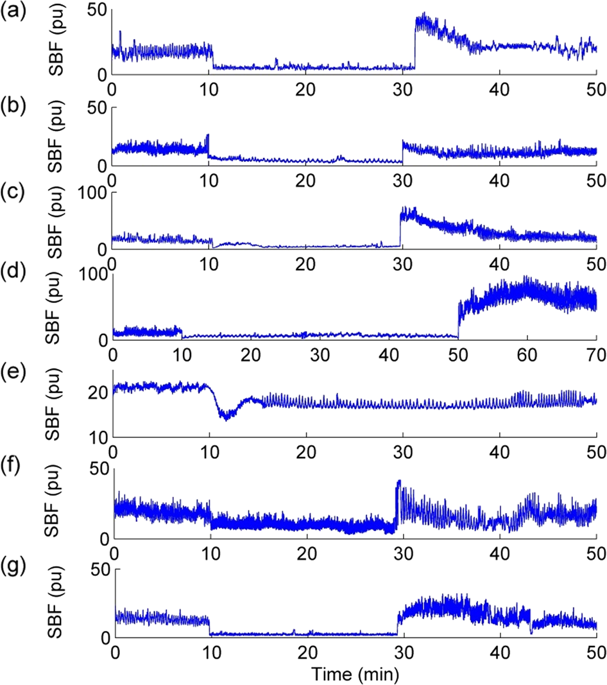Spinal Cord ( IF 2.1 ) Pub Date : 2019-11-07 , DOI: 10.1038/s41393-019-0378-x Yih-Kuen Jan 1

|
Study design
Experimental before–after design.
Objectives
The objectives of this study were to explore the effects of local cooling rates on perfusion of sacral skin under externally applied pressure in people with spinal cord injury (SCI).
Setting
Research laboratory.
Methods
Seventeen participants, including seven wheelchair users with SCI and ten able-bodied (AB) controls. Each participant underwent seven protocols, including pressure (60 mmHg) with local cooling (∆t = −10 °C) for 20 min at three cooling rates (−0.5, −4, −10 °C/min), pressure with local cooling for 40 min, pressure with local heating (∆t = +10 °C), local cooling without pressure, and pressure without temperature changes. Each protocol included a 10-min baseline, a 20-min (or 40-min) loading period and a 20-min recovery. A compound sensor head consisting of laser Doppler and heating and cooling probes was used to measure sacral skin blood flow and temperature in the prone position. Blood flow responses were characterized by peak blood flow, recovery time, and total blood flow in the recovery period.
Results
The results demonstrated that the cooling rate at −10 °C/min resulted in smaller skin blood flow response compared with −0.5 °C/min (p < 0.05) but were not significantly different to the cooling rate at −4 °C/min. There was a significant difference in the recovery time between the 20-min cooling compared with the 40-min cooling for the SCI group (p < 0.05).
Conclusions
Our findings provide initial evidence that local cooling rates affect skin blood flow responses under externally applied pressure in people with SCI.
中文翻译:

局部冷却速率对脊髓外伤患者骨皮肤在外部施加压力下的灌注的影响:一项探索性研究。
学习规划
实验前后设计。
目标
这项研究的目的是探讨在外加压力下脊髓损伤(SCI)患者局部冷却速度对rates皮肤灌注的影响。
环境
研究实验室。
方法
17名参与者,包括7名SCI轮椅使用者和10名健壮(AB)控件。每个参与者都经历了七个方案,包括 以三种冷却速率(-0.5,-4,-10°C / min)进行局部冷却(∆ t = -10°C)的压力(60 mmHg)20分钟,局部冷却的压力持续40分钟,局部加热压力(∆ t = +10°C),无压力的局部冷却和无温度变化的压力。每个协议包括10分钟的基准时间,20分钟(或40分钟)的加载时间和20分钟的恢复时间。由激光多普勒,加热和冷却探针组成的复合传感器头用于测量俯卧位的skin皮肤血流量和温度。血流反应的特征是峰值血流,恢复时间和恢复期内的总血流。
结果
结果表明,与-0.5°C / min相比,在-10°C / min的冷却速率导致较小的皮肤血流响应(p <0.05),但与在-4°C / min的冷却速率没有显着差异。SCI组在20分钟冷却与40分钟冷却之间的恢复时间有显着差异(p <0.05)。
结论
我们的发现提供了初步证据,表明局部降温速率会影响SCI患者在外部施加压力下的皮肤血流反应。











































 京公网安备 11010802027423号
京公网安备 11010802027423号